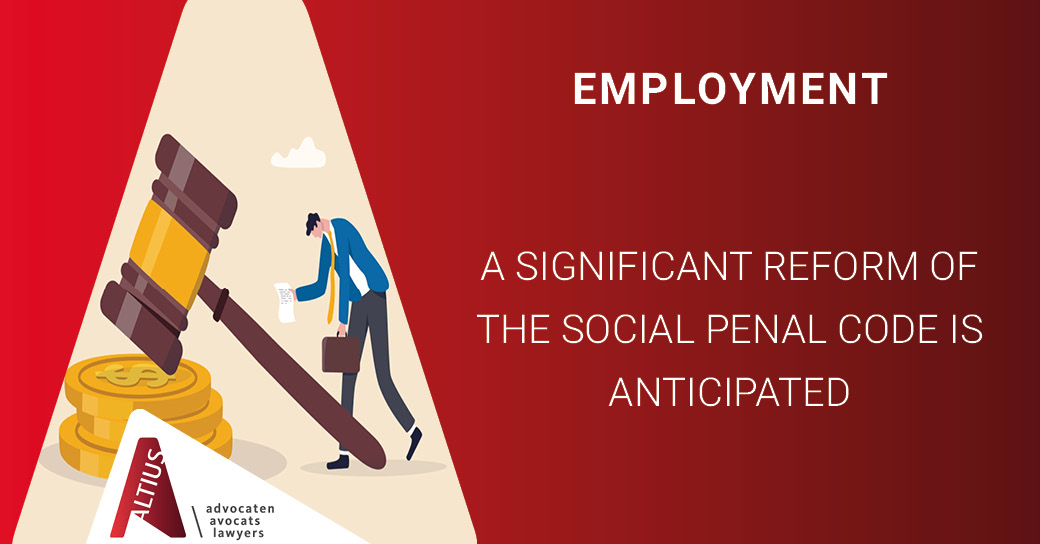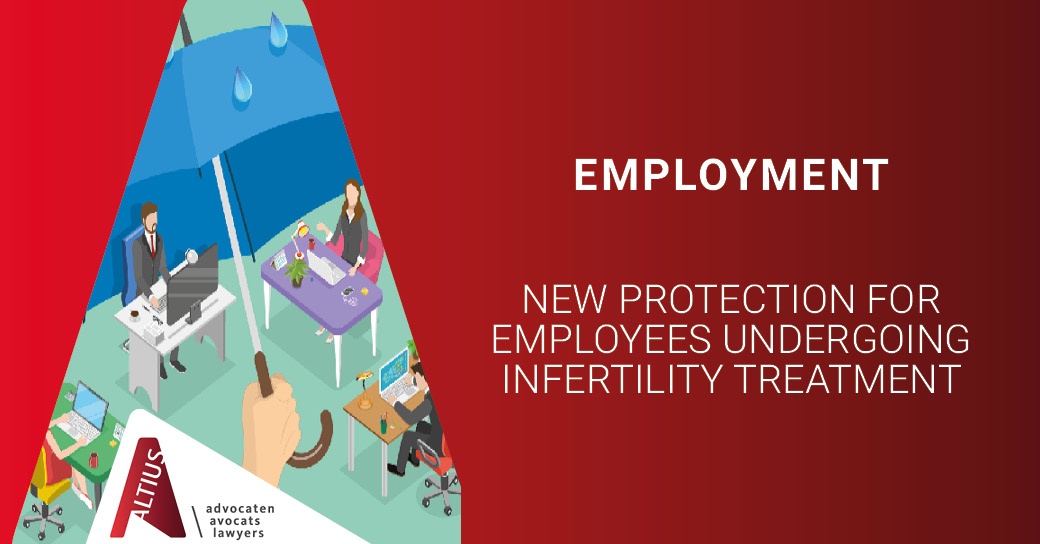Postponing of the social elections procedure due to Covid-19

Updated on Monday 11 May 2020- 11am
As already announced in our previous newsflashes, the social partners have decided to suspend the current social election procedure because of the coronavirus crisis and to restart the procedure after the summer.
On 24 March 2020, the National Labour Council (NLC) issued an opinion that highlighted the implications of this postponement for companies. This NLC opinion has now been transposed into a law which has been voted in Parliament on 23 April 2020.
This article outlines the most important consequences for employers.
1. Consequences of the suspension of the ongoing elections procedure and timing
- The social elections procedure will be paused (‘frozen’) from day X+36.
This means that:
- The procedural steps up and including day X+35 still needed to be completed.
Consequently, the candidates’ lists must have been filed with the employer between 17 and 30 March 2020 at the latest (depending on the chosen election day).
For companies that would have started the election procedure at a later date or for which the election procedure has been delayed due to an appeal to the labour court, lists of candidates can still be submitted up to and including ‘their day X+35’ and therefore possibly still after 30 March 2020.
The candidates’ lists will no longer be posted. Indeed, this happens on X+40, which is a date that has been postponed.
- All procedural steps falling after X+35 will be postponed.
The NLC proposed setting the new election day (day Y) between 16 and 29 November 2020, subject to the coronavirus public health situation.
The new election dates have yet to be determined by Royal Decree and will depend on the evolution of the pandemic. However, it is the legislator’s aim to retain the dates proposed by the NLC as much as possible. The new day Y may not be freely determined by the employer but will automatically follow by putting the originally chosen date into the new period.
This new day Y will be the benchmark for a new electoral calendar starting from day X+36, the day on which the election procedure will automatically resume.
On the basis of a new election day between 16 and 29 November 2020, the electoral procedure will thus automatically resume at the earliest on 23 September and at the latest on 6 October 2020 (dates subject to reservation). - In companies where no candidates’ lists were submitted on X+35 for any employee category, the employer may still decide to stop the election procedure now. However, any appeal against this decision to stop can only be lodged after the suspension.
2. Consequences for dismissal protection
For the protected employees from the 2016 elections
- The existing bodies (WC/CPPW) will continue to function until the new bodies are installed. The effective and substitute members of these bodies, as well as the non-elected candidates in the 2016 social elections (provided it was not a second unsuccessful candidacy) will remain protected against dismissal until the date of appointment of the new consultative bodies.
Since the appointment of the new consultative bodies (in principle on Y + 45) will take place between 31 December 2020 and 13 January 2021 (depending on the new date of the elections), the dismissal protection of these protected employees from the 2016 elections will thus de facto be extended until then. - As you know, a protected employee who is dismissed and whose reintegration is refused by the employer is entitled to a protection indemnity consisting of a fixed part (based on length of service) and a variable part, namely the salary ‘for the remaining part of the mandate’, i.e. until the installation of the new WC/CPPW (at the latest on Y + 45).
In the event of the dismissal of a ‘protected employee from the 2016 elections’ who is no longer a candidate in 2020, this variable part of the protection indemnity will be calculated as follows:

- If no new consultative bodies must be set up (because the average number of employees is less than 50 or 100), the members of the existing consultative bodies enjoy an additional protection of 6 months from the first possible 2020 election day. To this end, the new day Y must be taken into account, meaning that the 6-month extension runs as from 16 November 2020 (in the current proposal).
For new candidates
- The lists of candidates still needed to be submitted until day X+35 so that the new candidates for the 2020 social elections are known now and the ‘occult period’ has ended. Of course, these candidates will remain protected after X+35.
But since:
- the complaints procedure against the submitted candidate lists is postponed so that the trade unions will still be able to make changes to their lists after the resumption of the procedure in the event of a complaint until the new date X + 54 (except in the case of invalid candidacies); and
- after the resumption, the trade unions will still be able to replace candidates until the new day X+76 in 5 cases defined by law (i.e. death or voluntary resignation of a candidate, resignation from the trade union, change of category or the timely withdrawal of a candidate’s candidacy);
it is thus possible that after the resumption of the electoral procedure, new candidates will appear on the lists.
A candidate who, after the electoral procedure has been resumed, will be nominated by the trade unions to replace a candidate will be protected from 36 days before the day on which the procedure is resumed (starting between 18 August and 31 August 2020). Thus, from 18 August 2020 there will in effect be a ‘second occult period‘ (dates subject to reservation). - If a new candidate is dismissed in violation of the dismissal protection, a period starting from the day of his/her dismissal (and at the earliest from the original date X-30) until the first meeting of the Works Council and/or the CPPW after the social elections of 2024 will be taken into account for the variable part of his/her compensation.
3. Eligibility conditions
- All eligibility conditions of the nominated candidates for the 2020 social elections will be assessed on the basis of the original day Y.
- The second length of service condition that temporary agency workers must meet to be eligible to vote (26 working days between X and X+77) will be neutralised during the period of the temporary suspension of the election procedure (between the original date X+36 and the resumption of the procedure).
Written by
Recommended articles
Internal investigations: an employee’s right to be assisted during an interview.
Although employers have been proceeding with internal investigations for decades, nowadays they raise more and more legal questions. Driven by legislative initiatives and case law trends, there are many situations in which an employer may be forced to an internal investigation.
Read onA significant reform of the Social Penal Code is anticipated
A new draft Act has recently been submitted to the Belgian Parliament that aims to amend the Social Penal Code which lists the infringements of labour and social security law that are punishable and the related penalties.
Read onNew protection for employees undergoing infertility treatment
The Belgian Parliament has adopted a new Act to better protect employees undergoing infertility treatment. The new Act aims to protect these employees against (i) dismissal, and (ii) discrimination. It therefore updates two well-known Belgian employment law Acts: the Labour Act of 16 March 1971 and the Gender Act of 10 May 2007.
Read on


